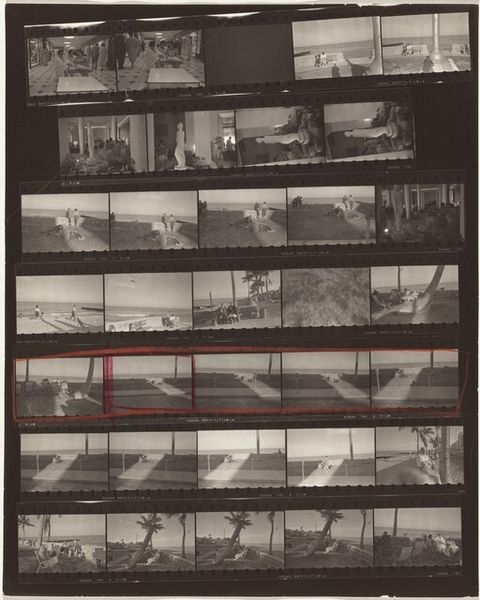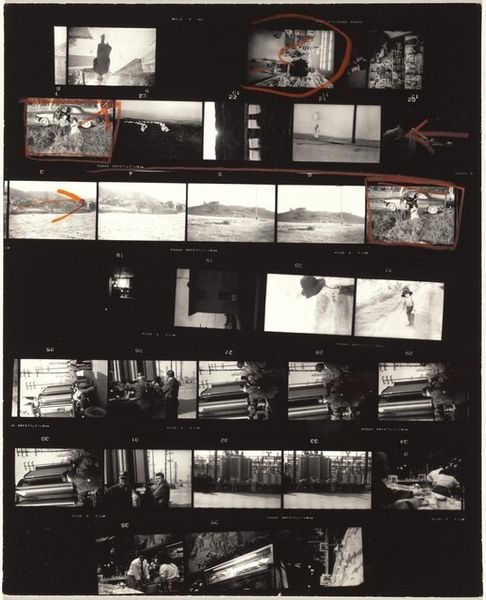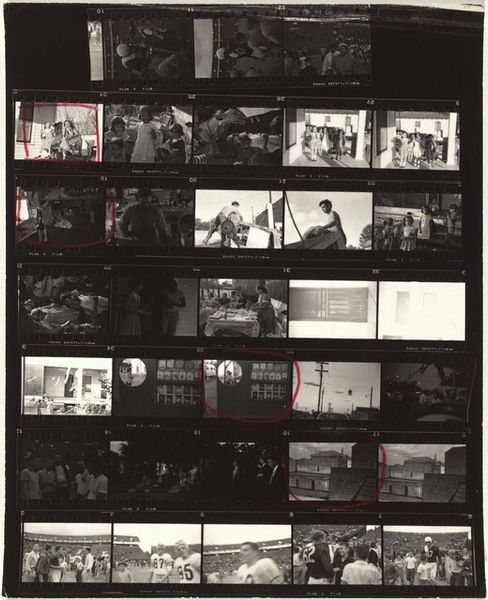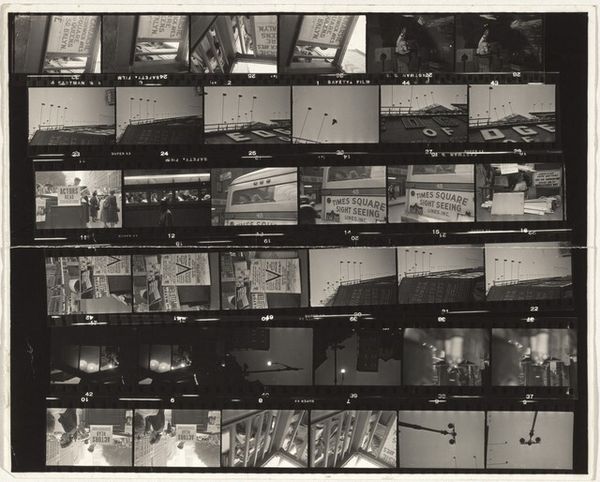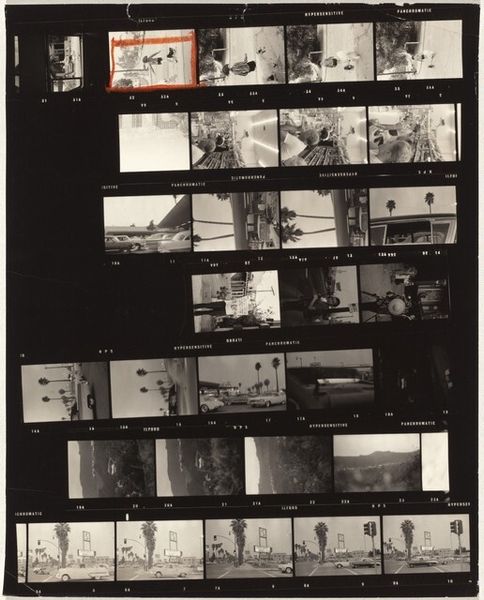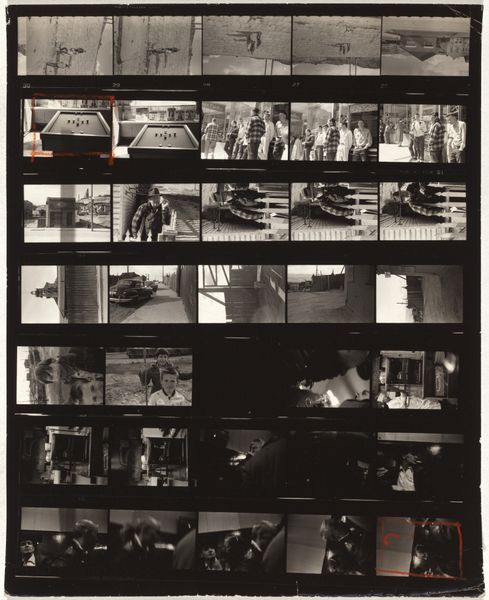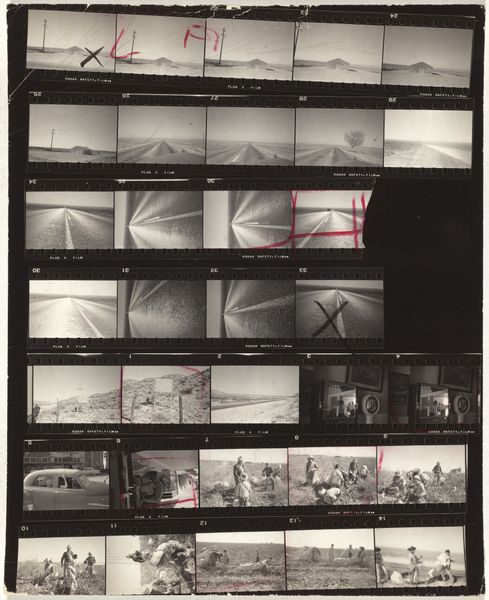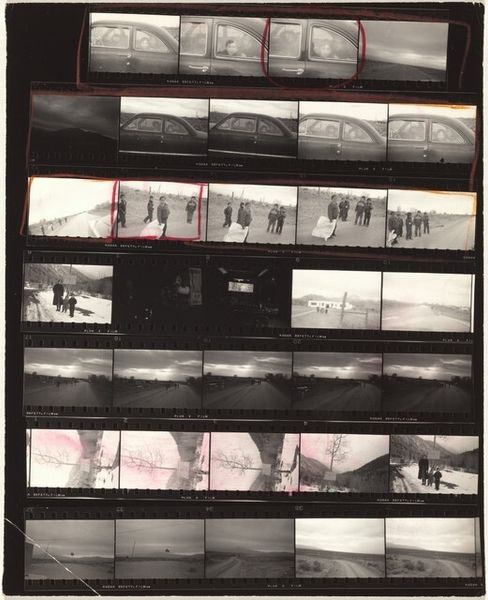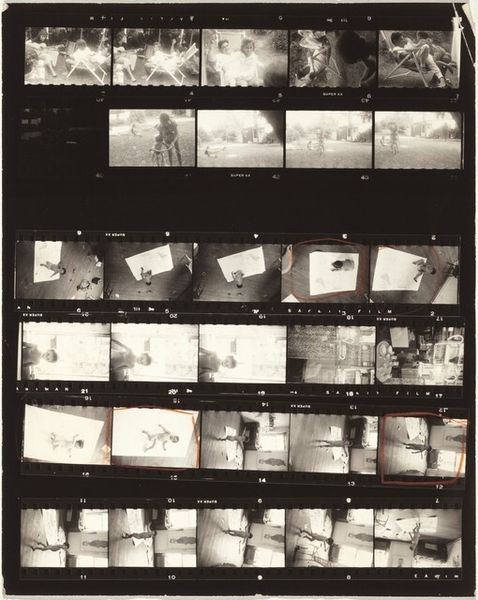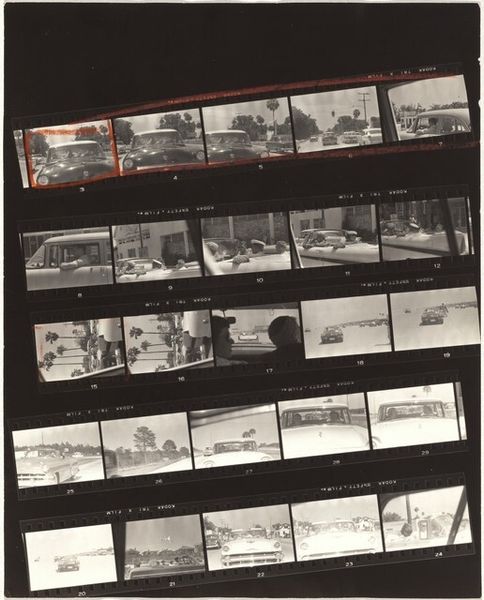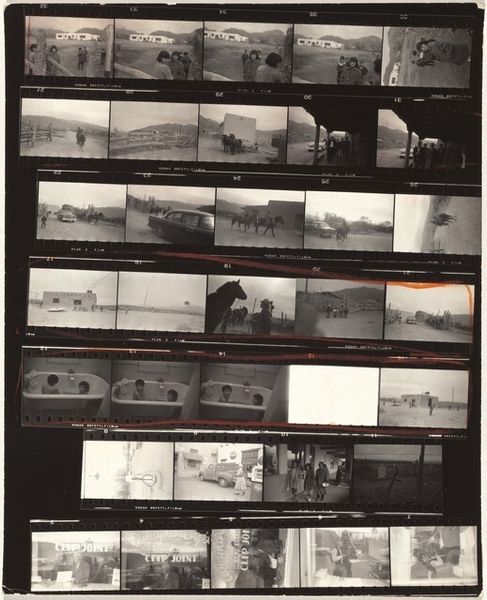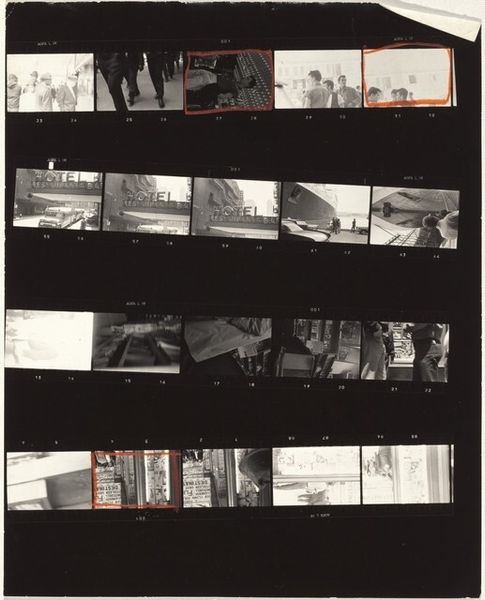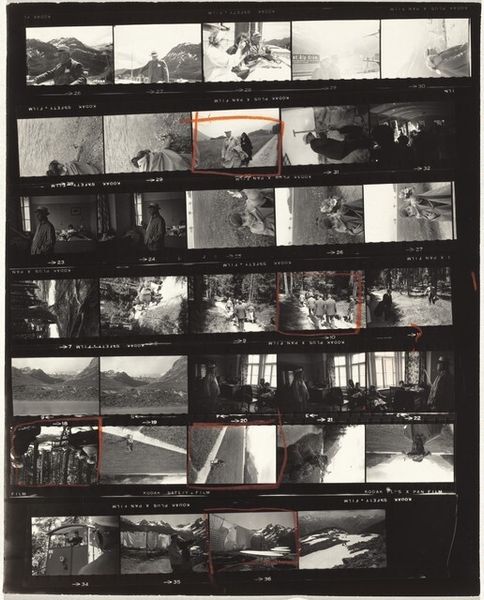
photography, gelatin-silver-print
#
film photography
#
landscape
#
street-photography
#
photography
#
gelatin-silver-print
#
pop-art
#
film
#
realism
Dimensions: overall: 25.4 x 20.5 cm (10 x 8 1/16 in.)
Copyright: National Gallery of Art: CC0 1.0
Curator: What do you see when you look at Robert Frank’s contact sheet “Guggenheim 531/Americans 48—Los Angeles" from 1956? Editor: Grain, mostly! And light…flickering. It looks like a restless eye trying to find something to hold onto in the glare of Los Angeles. What did *he* see, I wonder? Curator: He was in search of America. In the mid-fifties, Frank received a Guggenheim Fellowship to travel the country, and this gelatin silver print captures selections from those travels. He was particularly interested in the unseen, the everyday. Editor: A gelatin silver print… so we're talking about a material process rooted in light sensitivity and chemical reactions. Look at how he captured those ordinary moments. There are power lines crisscrossing, families lining the street, religious statues. I see a commentary about the promises and realities of American life reflected through its landscape and production means. Curator: Precisely. There’s a beautiful tension, isn’t there? A grittiness, yet it hints at so much beneath the surface. The use of contact sheets offers us an intimate look into his working process. We can see what he considered, what he discarded. What captured his interest is exposed bare for the audience. Editor: And this "failed" frame is interesting in itself. Failed art as the true art? It also points to this very intentional act of selection. To display contact sheets implies value. It is an intimate act to bring the normally unseen means of creating something to center stage. Curator: Exactly! By letting us into his world, Robert Frank is saying, here is how I interpret things, these are the materials and moments I choose to expose. Now, what do *you* make of it? What materials make *your* world? Editor: I hadn’t considered that so literally, but thinking of labor like this, how we engage in selection and construction of narrative…that connects. There is material inherent in everything. Curator: So even us talking about a photo, dissecting it, layering *our* perspectives – is just another type of "selection.” An excavation. A re-photographing of history if you will. Editor: True. It feels almost participatory, doesn’t it? That act of looking, really looking at Frank's frames. We're not just seeing Los Angeles in the fifties. We're remixing it for today, complete with our biases.
Comments
No comments
Be the first to comment and join the conversation on the ultimate creative platform.
